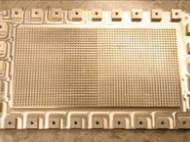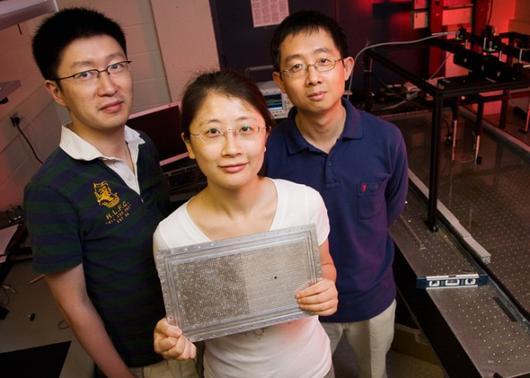First acoustic superlens created
 A team of researchers at the University of Illinois has created the world’s first acoustic “superlens”. It is an innovation that could have practical implications for high-resolution ultrasound imaging, non-destructive structural testing of buildings and bridges, and novel underwater stealth technology. According to the results, the acoustic system is analogous to an inductor-capacitor circuit. The transmission channels act as a series of inductors, and the Helmholtz resonators, which researchers described as cavities that house resonating waves and oscillate at certain sonic frequencies, act as capacitors.
A team of researchers at the University of Illinois has created the world’s first acoustic “superlens”. It is an innovation that could have practical implications for high-resolution ultrasound imaging, non-destructive structural testing of buildings and bridges, and novel underwater stealth technology. According to the results, the acoustic system is analogous to an inductor-capacitor circuit. The transmission channels act as a series of inductors, and the Helmholtz resonators, which researchers described as cavities that house resonating waves and oscillate at certain sonic frequencies, act as capacitors.
Led by Nicholas X. Fang, a professor of mechanical science and engineering at Illinois, the team successfully focused ultrasound waves through a flat meta-material lens on a spot roughly half the width of a wavelength at 60.5kHz using a network of fluid-filled Helmholtz resonators.
Fang said acoustic imaging is somewhat analogous to optical imaging in that bending sound is similar to bending light. But compared with optical and X-ray imaging, creating an image from sound is “a lot safer, which is why we use sonography on pregnant women,” said Shu Zhang, a U. of I. graduate student who along with Leilei Yin, a microscopist at the Beckman Institute, are co-authors of the paper. Although safer, the resultant image resolution of acoustic imaging is still not as sharp or precise as conventional optical imaging.
“With acoustic imaging, you can’t see anything that’s smaller than a few millimeters,” said Fang, who also is a researcher at the institute. “The image resolution is getting better and better, but it’s still not as convenient or accurate as optical imaging.”
“If we wish to detect or screen early stage tumors in the human body using acoustic imaging, then better resolution and higher contrast are equally important,” he said. “In the body, tumors are often surrounded by hard tissues with high contrast, so you can’t see them clearly, and acoustic imaging may provide more details than optical imaging methods.”
The application of acoustic imaging technology goes beyond medicine. Eventually, the technology could lead to a completely new suite of data that previously wasn’t available to us using just natural materials. In the field of non-destructive testing, the structural soundness of a building or a bridge could be checked for hairline cracks with acoustic imaging, as could other deeply embedded flaws invisible to the eye or unable to be detected by optical imaging.
Fang said acoustic imaging could also lead to better underwater stealth technology, possibly even an “acoustic cloak” that would act as camouflage for submarines. “Right now, the goal is to bring this ‘lab science’ out of the lab and create a practical device or system that will allow us to use acoustic imaging in a variety of situations,” Fang said.
The researchers claim they need another 3 to 5 years of development in order to transform their demonstrations into practical structures. We’ll see which of the above mentioned applications will be developed first.










Leave your response!